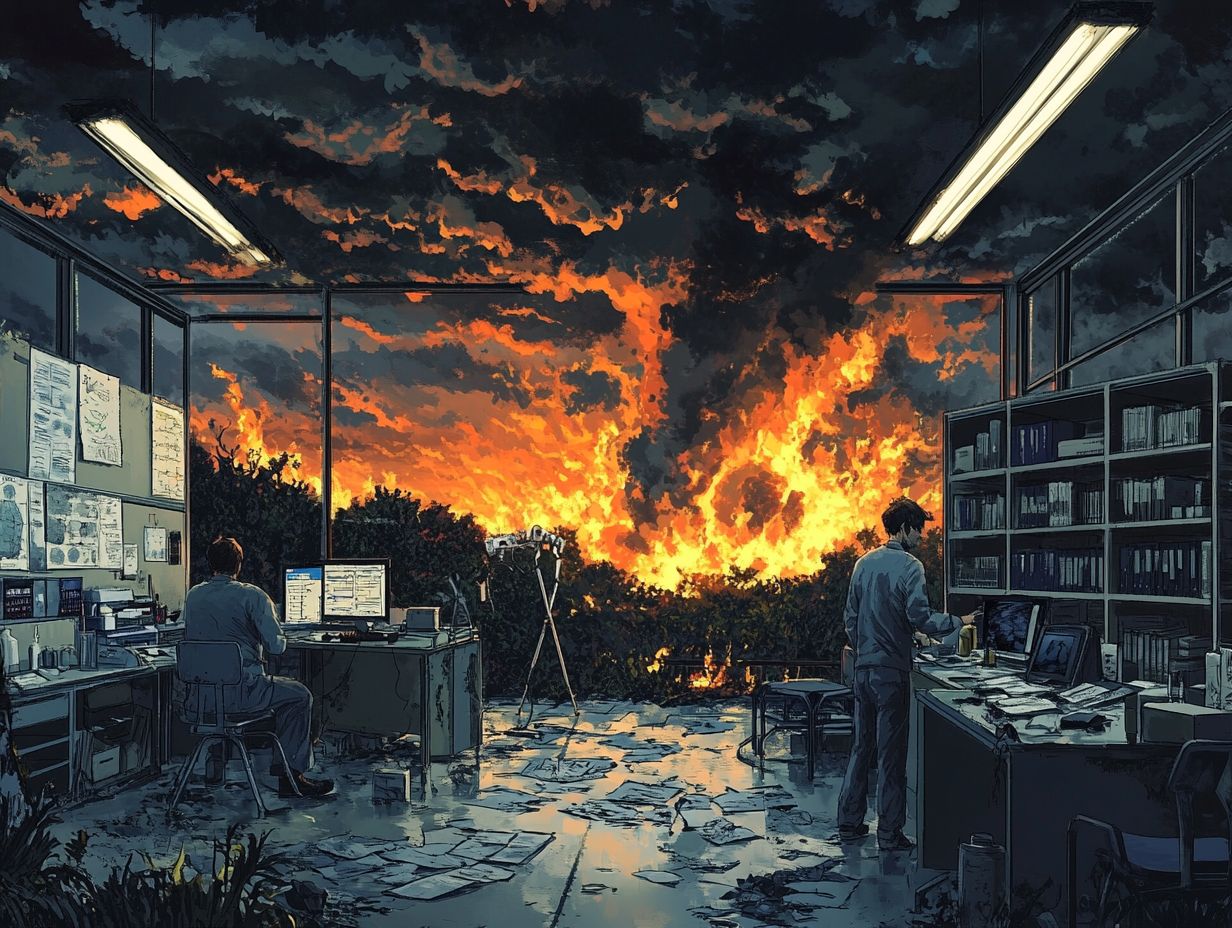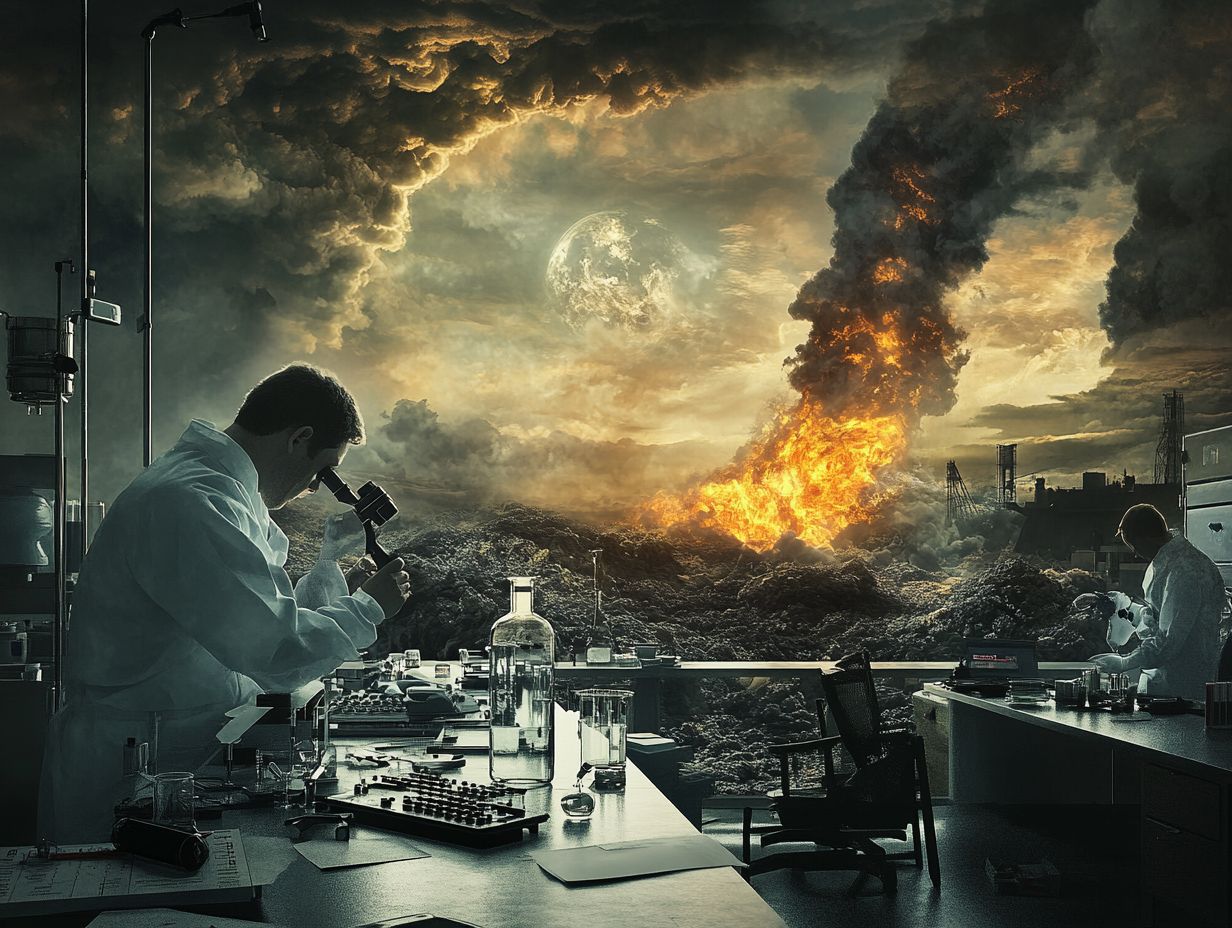Doomsday predictions have captivated human imagination for centuries, eliciting a range of responses that include fear, curiosity, and debate.
From ancient prophecies to contemporary theories, these forecasts often intertwine science with speculation, leaving many individuals uncertain about what to believe.
This article aims to elucidate the essence of doomsday predictions by examining their historical roots, notable claims, and the scientific evidence—or lack thereof—that underpins them.
Additionally, it addresses the importance of distinguishing fact from fiction and provides guidance on how to prepare for unforeseen disasters, both mentally and practically.
Readers are invited to explore the truths and myths surrounding the potential end of the world as we know it.
Understanding Doomsday Predictions

Doomsday predictions encompass a broad spectrum of forecasts regarding the potential end of the world, often grounded in diverse belief systems, folklore, and scientific theories. These predictions have been integral to human culture for centuries, mirroring our apprehensions and concerns about existential risks, including climate change, natural disasters, and technological threats.
The media play a significant role in influencing these prophecies, shaping public perception and fostering a culture of survivalism that emphasizes the importance of emergency preparedness and planning.
It is crucial to engage in a critical analysis of these predictions through the lens of the scientific method, as well as psychological and sociological studies, to effectively discern fact from fiction.
What Are Doomsday Predictions?
Doomsday predictions refer to forecasts concerning catastrophic events anticipated to result in the end of civilization or significant societal collapse, often founded on a combination of prophecy and cultural beliefs. These predictions have been a significant aspect of human history, functioning as both cautionary tales and deeply entrenched cultural narratives that resonate across various societies.
From the ancient Mayans, whose calendar was believed to signify an apocalyptic event, to contemporary conspiracy theories surrounding Y2K and the 2012 phenomenon, such predictions illustrate a complex interplay between fear and hope. Apocalypse theology, which frequently intertwines religious doctrines with prophetic visions, contributes to a societal perspective that frames these events. This interplay prompts discussions regarding historical accuracy and the psychological factors that lead communities to adhere to such dire forecasts.
The History of Doomsday Predictions
The history of doomsday predictions is both rich and complex, encompassing a wide range of civilizations and cultures that have voiced concerns regarding apocalyptic events through folklore, religious texts, and scientific theories.
From the ancient prophecies of the Mayans to contemporary interpretations related to climate change and technological risks, these predictions have evolved over time, mirroring humanity’s collective psyche and responses to existential threats.
Notable historical events, such as the Black Death and World War II, have further exacerbated these fears, significantly shaping public perception and media narratives surrounding the concept of the end times.
This has often resulted in the emergence of movements centered on survivalism and community preparedness.
Notable Predictions and Their Outcomes

Throughout history, numerous significant doomsday predictions have emerged, each accompanied by unique outcomes that often reflect the societal beliefs and behaviors of the time, ranging from the Y2K scare to the alleged end of the Mayan calendar in 2012.
These predictions frequently capitalized on pre-existing fears, which were further amplified by social media and sensationalist reporting, resulting in waves of misinformation that significantly influenced public perceptions. For example, in the lead-up to Y2K, widespread belief in potential technological failures led many to anticipate chaos and disorder. This reaction was rooted in cognitive biases, such as hindsight bias and the availability heuristic, which caused individuals to be more prone to foresee disasters based on prior experiences or dramatic media portrayals.
Sociological and anthropological perspectives provide valuable insights into these public behaviors, demonstrating how collective fears can shape societal responses and drive individuals toward extreme actions or beliefs. Such dynamics often influence voting patterns and consumer behavior in the wake of these predictions.
The Science Behind Doomsday
The analysis of doomsday predictions entails a thorough examination of various theories and empirical data pertaining to potential catastrophic events, which may include climate change, natural disasters, and technological risks such as nuclear threats and pandemics.
Through the application of the scientific method, researchers are able to evaluate these existential risks, utilizing predictive analytics and statistical modeling to analyze historical patterns and forecast future scenarios.
This rigorous scientific approach not only enhances the understanding of the validity of doomsday predictions but also contributes to informed public discourse regarding survival strategies and emergency preparedness.
What Scientific Evidence Supports Predictions?
Scientific evidence supporting doomsday predictions frequently centers on findings related to climate change, natural disasters, and technological risks, underscoring the necessity for rigorous data analysis and critical thinking to distinguish fact from fiction.
The significance of this scrutiny is reinforced by various peer-reviewed studies that establish a connection between rising global temperatures and the increased frequency of extreme weather events, such as hurricanes and wildfires. For instance, research published in esteemed journals demonstrates how shifts in climate patterns correlate with a rise in natural disasters, thereby highlighting the unpredictable yet imminent risks that societies must confront.
Rationality in risk communication is essential as communities navigate the complexities of alarming data and potential outcomes. A synthesis of these findings portrays a concerning picture of our ecosystem’s fragility, urging both authorities and individuals to engage with the vigilance that these scientific data necessitate.
Debunking Common Misconceptions

Debunking common misconceptions surrounding doomsday predictions is essential for fostering scientific skepticism and promoting critical thinking, particularly in an era characterized by misinformation and the influence of media, which can amplify societal fears.
The appeal of catastrophic forecasts often leads individuals to react emotionally rather than analytically, rendering them vulnerable to sensationalist narratives. For example, predictions of an impending apocalypse based on alleged astronomical alignments or ancient prophecies can induce significant anxiety, driven by cognitive biases that emphasize negative outcomes. The media plays a crucial role in this context, frequently prioritizing sensational headlines over well-substantiated facts.
By comprehending the psychological mechanisms involved, including the ways in which pseudoscientific claims can capture public imagination, society can learn to critically evaluate such doomsday scenarios. This understanding can effectively demystify myths and promote informed discourse.
Assessing the Validity of Doomsday Predictions
Evaluating the validity of doomsday predictions necessitates a comprehensive approach that takes into account the evidence, historical context, and the underlying motivations behind these forecasts.
This process ultimately fosters critical thinking and encourages informed citizenship.
Factors to Consider
When evaluating the validity of doomsday predictions, it is imperative to consider several factors, including the psychological dimensions of fear, the influence of belief systems, and the role of media in shaping public perception.
Moreover, it is essential to analyze how group dynamics can intensify emotional responses among individuals, particularly within communities that share similar beliefs. Such collective sentiments often skew personal risk perception, resulting in increased anxiety and irrational decision-making. The influence of social media should not be overlooked, as it frequently serves as a catalyst for disseminating alarmist narratives, thereby amplifying fears and creating echo chambers.
By comprehensively understanding these psychological and sociological factors, one can develop a more nuanced perspective on why certain predictions gain widespread traction, even in the absence of empirical support.
Preparing for Potential Disasters

Preparing for potential disasters is a crucial component of survivalism, encompassing strategic planning, community engagement, and the formulation of effective survival strategies aimed at mitigating the impacts of various catastrophic scenarios.
Emergency Preparedness and Planning
Emergency preparedness and planning are critical elements of effective disaster response, enabling individuals and communities to proactively address potential crises associated with doomsday predictions.
Considering the unprecedented challenges our world currently faces—such as resource depletion, rapid population growth, and ecological crises—the necessity of being adequately prepared cannot be overstated.
Communities that implement appropriate strategies are better equipped to withstand not only natural disasters but also man-made emergencies. This entails the development of comprehensive emergency plans, the establishment of communication channels, and the acquisition of essential supplies.
Furthermore, understanding potential risks and educating the public about disaster readiness can foster resilience, ensuring that individuals are equipped to effectively manage unexpected situations.
Ultimately, cultivating a culture of preparedness is essential for safeguarding our future against the impending challenges that lie ahead.
Mental and Emotional Preparedness
Mental and emotional preparedness is essential for individuals and communities in their responses to potential disasters, as it establishes a framework for resilience and effective coping mechanisms amid fear and uncertainty.
A comprehensive understanding of the psychological aspects involved can significantly enhance this preparedness, particularly because individuals are often susceptible to cognitive biases that may result in exaggerated emotional responses during crisis situations.
By promoting awareness of these biases, both individuals and communities can more effectively navigate the complexities of their emotions when confronting disruptions.
Public engagement initiatives that encourage collaboration and resource sharing can create a robust support network, facilitating open discussions about mental health and disaster preparedness.
These communal efforts not only strengthen emotional resilience but also enable more informed and coordinated responses when calamities occur.


